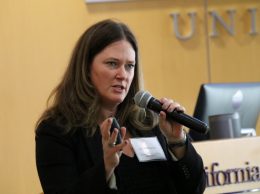Editorial: Rethinking the state’s broken unemployment system
Aides to Gov. Jerry Brown have been looking for ideas to fix the state’s broken unemployment system.
It’s about time. Today, more than 500,000 Californians receive as much as $450 per week in unemployment benefits that until recently could last for 99 weeks. During the recession, with layoffs soaring, the state racked up $10 billion in debt to the federal government because Uncle Sam advanced the money to California when the state’s own funds ran out.
Interest on the debt to the feds already is draining about $300 million a year from various funds, and the state must pay back the entire $10 billion by 2017.
Employers across the state should be bracing for increases in the so-called federal share of unemployment insurance. But the bigger hit that’s coming is the state’s share of unemployment insurance. Today, every employer in the state pays roughly $350 per employee into the state’s unemployment fund, just to keep it going. That isn’t enough money to pay back the state or federal debt, and there certainly isn’t enough to pay the interest.
So far, organized labor has drawn a line in the sand, saying it won’t stand for benefit cuts. But the Obama administration on April 28 began putting into place a 17.7 percent benefits cut thanks to the so-called budget sequester.
Here are some more ideas:
• Link benefits to training, not just job searches. Research shows that the longer unemployed folks stay out of work, the less employable they are. Linking benefits to getting trained for new jobs is key.
• Find creative ways to bridge gaps. Many of the chronically unemployed are not going to be able to get their old jobs back. But they will be able to find work in lower-paid jobs. Small amounts of temporary assistance to adjust to lower-paid work could really help; so could relaxed work rules for hiring chronically unemployed folks.
• Balance cost increases for business with benefit cuts for the unemployed. Chances are that any increase in costs to employers will result in fewer new hires; fewer new hires make it harder for the unemployed to find work. You get the picture.
• Don’t punish the good guys. Companies that did not have substantial layoffs during the recession or that have rebuilt their unemployment insurance surpluses are still paying through the nose because the state is broke. A payment schedule that rewards companies that retain workers with lower rates should remain at the core of the unemployment insurance system.
• Convene a Council on Competitiveness to come up with rules changes to add flexibility to California’s workplaces. We’ve seen hints that the administration of Gov. Jerry Brown is willing to get creative when it comes to worker’s compensation — perhaps a more flexible workplace will help make California more competitive and keep it from getting into future trouble on the unemployment front.











